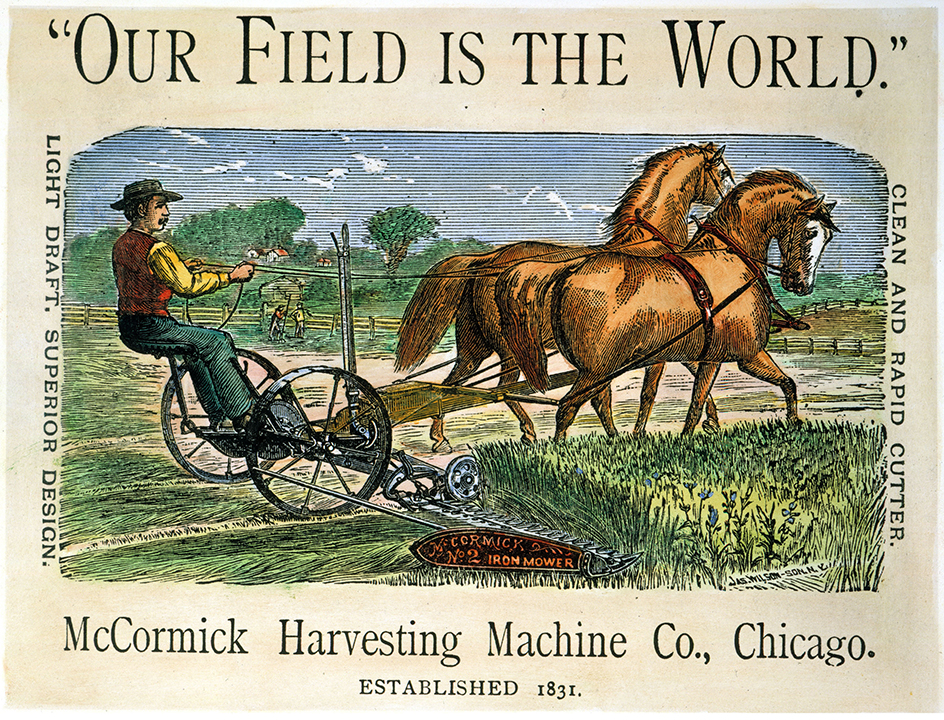Reaper is a machine that farmers once used to harvest grain. Horse-drawn reapers took the place of sickles and cradle scythes, which farmers had used for centuries. With a reaper, farmers could harvest larger crops with fewer workers than ever before.

Several reapers were developed during the early 1800’s. But none of them became as commercially successful as the reaper developed by the American inventor Cyrus Hall McCormick (see McCormick, Cyrus Hall ). His reaper had a straight blade linked by gears to a drive wheel. As the wheel turned, the blade moved back and forth and sawed through the stalks of grain. Projecting rods caught and held the stalks while the blade cut through them. The stalks fell onto a platform and a worker raked them onto the ground.
McCormick first offered his reaper for sale in 1840. He continued to improve it, and sales grew. The reaper was well suited for the Midwest, where farmers grew wheat and other small grains on fairly level land. But 8 to 10 workers were needed to bring in the crop. One drove the horse, a second raked the platform, and 6 to 8 workers bound the sheaves. Inventors worked on reducing the number of workers needed.
During the mid-1850’s, self-rake reapers came into use. On these reapers, a rake swept across the platform. In the early 1870’s, the American inventor Sylvanus D. Locke produced a binder. This reaper bound the sheaves and dropped them on the ground. By the early 1920’s, many farmers used tractors to pull binders. Since the 1920’s, reapers have been replaced by combined harvester-threshers that are called combines (see Combine ).
